He appreciates the fact his employees feel the same way and, frankly, he feels this industry would be a whole lot better off if more shop owners followed his lead.
Okay, so the guy is obviously crazy or from out of this world, right? Take time off from the shop when it’s a struggle to keep the doors open as it is?

Well, he may be from out of the country but he’s definitely NOT crazy. And his simple, honest approach to his term at the helm of AERA should help shop owners realize that, in today’s environment, getting ahead in business often means getting away from it all.
“That’s one of the biggest problems I see facing shop owners today – we don’t like to take time off. We tend to get wrapped up in an ‘Oh, they won’t survive without me,’ mindset, when we really need to be able to get away and recharge the batteries,” Munro says.
“I think our industry is a little bit numb right now from everything that has happened to it,” says Munro. “We need to be able to get away from the shop to clear our heads from time to time.
Understand, of course, that Munro doesn’t advocate abandoning the shop in the midst of a huge job.
“‘Clearing your head’ doesn’t mean ignoring your business,” he says. “But it can free you to be more creative in your thought processes, and look for different ways you can grow your business.”
For example, Munro says his entire family loves to spend the weekend at the motocross track. “My 11-year-old daughter and 8-year-old son, as well as my wife, all love to ride. The kids are at the point where they can do a lot of the work getting ready themselves, which frees us to enjoy ourselves.”
That enjoyable time with his family is one of the ways Munro measures success. “You have to find an outlet,” he says. “In my mind, success isn’t based on how much money I’ve made, but what I’ve accomplished. I wish every shop owner could find that release. Too many owners are in the shop from 7 a.m. to 9 p.m. every day including Saturday. Sorry, but that kind of life doesn’t cut it for me.”
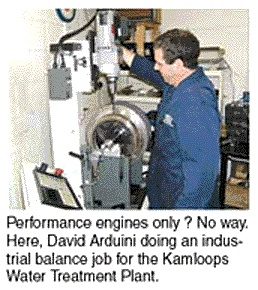
While he realizes that every situation is different, and acknowledges a slight difference in business cultures between Canada and the United States, Munro says every shop owner – even his fellow AERA board members – could benefit from some time away from the business. “The board is filled with progressive shop owners who are constantly trying to make a difference in their shops. But even they need a chance to get away. Time to get away, refresh and educate yourself is time well spent,” he says.
Valley Speed Machine Shop
Rob Munro began his rebuilding career during his senior year in high school. He was working at Valley Speed after school and on weekends to pay the outstanding bill for work on his 1978 small block-powered Chevy Nova, and had begun to think seriously about turning his rebuilding hobby into a full-time career. After graduation, Munro was hired full-time and had earned his journeyman’s qualifications by 1988.
In 1990 the owner purchased another business and left Munro in charge of the managing the shop until 1994, when Munro bought Valley Speed.
One of his first decisions, he says, was to automate the shop. He computerized all the accounts and payroll and purchased a complete machine shop operation software package. He says this investment eliminated the need for a dedicated receptionist, secretary, office manager and accountant.
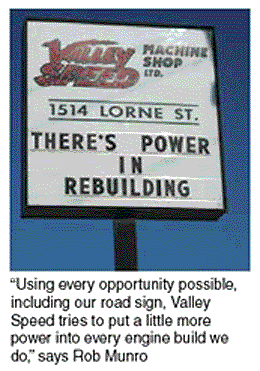
The shop’s centrally located office allows Munro to be accessible to employees, customers and telephones, and scattered throughout the shop are several computer terminals, which allow his staff to access the software and the Internet without interrupting their productivity.
Munro says his early introduction to business software convinced him how important it was to know his shop’s numbers, something he worries too many of his brethren aren’t savvy about.
“The AERA board members regularly look at the numbers of shop owners who have computers, whether with PROSIS or some shop management software, and the numbers are scary. There are obviously a great many people still writing invoices by hand and looking up parts specifications in old manuals.”
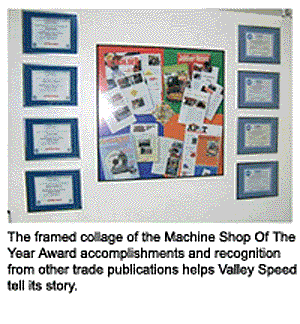
Munro sympathizes with many shop owners today who may not have a solid business background. “I started the same way many of these people did. We’re just machinists who got a business opportunity – we were kind of forced into it.”
His recommendation is, not surprisingly, time away from the shop. But not just vacation time – the incoming AERA chairman recommends that shop owners take time to attend industry association trade shows, such as the AERA RPM Tradeshow in Indianapolis, IN, later this month. In addition to the tradeshow and seminars, Munro says one of the convention’s biggest benefits is the chance to discuss business with like-minded shop owners.
Change For The Better
At the 2000 AERA Tech Show in Dallas, TX, Munro and his staff at Valley Speed were being honored as th Machine Shop of the Year. He says winning that award began some very positive changes for his shop.
At the time, Kamloops was in the midst of a local depression, yet Valley Speed was doing very well. Sales had increased 25 percent in the six years since Munro purchased the business and he said then, “We seem to be on the right track.”
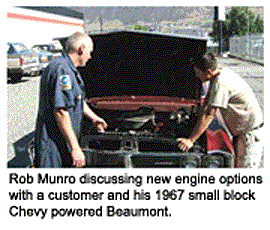
Today, Kamloops’ economy is booming, although at the expense of many, many pine trees. “We’ve had a number of forest fires because of the heat. In addition, the mountain pine beetle is absolutely destroying our forests,” Munro says. If you’re a logger, a rancher or a farmer, that’s a good thing because all these dead trees need to be removed.”
If you’re an engine builder it’s a pretty good thing too, because the workers are flush with cash. “Our unemployment is the lowest its been in a long time,” Munro says. “Performance and restoration work is huge for us right now. Customers come in wanting $10,000 small blocks – just a couple of years ago it was hard to upsell even a camshaft and balance job. Now, they want the works, and they want it right now.”
He continues: “It’s almost a case of them coming in saying ‘I have the money now and I want to spend it now. Otherwise, something else will seem more important.’”
Performance continues to be the hot ticket for Valley Speed, and while he sees huge opportunities for other shops as well, he recognizes that it may be intimidating for some without a performance background. His advice? Don’t worry.
“A lot of shops are scared of performance – just like we as a custom automotive shop are scared of heavy-duty. There are so many opportunities in that arena that we don’t know how to proceed,” Munro says. “We’re afraid of it because we haven’t worked on it before. But the fact is, it’s just a motor. It requires all the same machining functions as an automotive engine. We just need to overcome our confusion.”
Munro admits he’s in the same boat as all the the other shop owners trying to make sense of the market’s direction. “I used to be able to go to the conventions knowing exactly what direction I wanted to take the business and what piece of equipment I needed to buy to get there. Now, I think I know, but there’s a fear involved.”
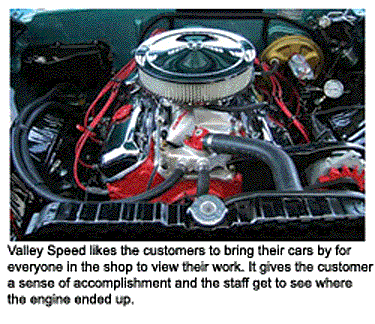
Obviously, Munro doesn’t believe that being the chairman of AERA requires him to have all the answers. On the contrary, he says it just enables him to ask the questions.
“I think our industry has changed so much that we don’t really know which way to turn,” he says. “I wouldn’t say it’s doom and gloom, but it’s a fact that things have changed dramatically and we’re just not sure what to do.”
Cooperation and interaction between shop owners at conventions and when back at their shops will help keep this industry vital, says Munro. “I’d like to encourage the membership to work closer together and network whenever possible. It can help everyone realize that while our situations may be different, we’re all dealing with the same problems. We can all use help figuring out what comes next.”
And that help can come from the most unlikely of places.
“When we go motocrossing, I usually try not to talk shop. But my wife has asked me for years why we don’t work on the little motorcycle engines. Once I started talking to the bike owners, I realized they’re just like the car guys: they’re all looking for that extra one or 2hp from a 250 cc motor. It becomes interesting to think about. Most of the bikes are now four-stroke, they all have valves, they all need port work…it’s just one more of the opportunities you can find if you just think about your business in a new, creative way.













